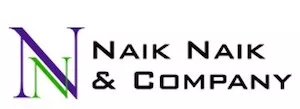- with readers working within the Banking & Credit industries
- within Cannabis & Hemp, Strategy and Criminal Law topic(s)
The United States Copyright Office (USCO) released crucial guidelines on the interplay between Copyright & AI in their January 2025 Report. This is second part of the three reports which the USCO aims to release on the intersection of AI & Copyright. The first report was released in July 2024 addressing digital replicas. Moving forward, part three of the report will address the concepts of training AI models on copyrighted content, licensing considerations, fair use and allocation of liabilities which will be released later this year.
The report reinstates the longstanding belief that right to copyrightability is reserved for human authorships. It strongly emphasizes on the importance of human involvement in creations. It asserts that the creations produced entirely by artificial intelligence (AI) are not eligible for copyright protection. The office provided guidelines on assessing works involving AI in the following areas: (1) to use AI as an assistive tool rather than a replacement for human creativity, (2) including human creativity in the outputs produced by AI, (3) merging human inputs and AI generated elements to create an entirely new concept.
The Copyright office is not against the AI involvement in creations but rather against letting AI make all the creative decisions. The office necessitates human touch. It emphasizes on taking assistance from AI rather than AI simulated output based on a single general prompt with de minimis creativity that lacks the required human expression. A key takeaway from this report is prompts. Text prompts, even the detailed ones cannot provide sufficient human control on AI- generated outputs to provide authorship rights to the owner. While these highly descriptive prompts may describe user's desires, it still generates radically different results each time, indicating lack of human creativity and control over AI's internal “black box” processes by giving simulated outcomes.
To illustrate their point, the office uses Jackson Pollock's paintings as an example of copyrightable works. Here, even though the final outcome of a pollock painting may be vague and unpredictable, ultimately pollock himself chose the colours, layers, textures and painted it by himself, giving it a human touch. In contrast, AI- generated works often contain pre-determined algorithms & commands where the user simply enters the text prompt and receives a ready-made output.
The guidelines state that when the author registers their AI assisted inventions, they need to specifically disclaim any “non-human expressions”. That means clearly separating what you created from what the AI generated. The owner must disclose the use of AI in their copyright applications if the work contains more than a de minimis amount of AI generated material. This transparency helps in determining the extent of human authorship in the work.
After making creative changes to the AI generated work if the author's creative input is perceivable in the final outcome, such work may be eligible for copyright protection. Similarly, creations where AI is used to enhance it (for eg: visual effects in a film), may be copyrightable even though the AI generated material may not be individually protected. Further, pending copyright applications that don't adhere to these guidelines must be rectified by either reaching out to the USCO or filing an additional registration application. In case of existing registrations, the applicant must amend any failure to disclose the AI generated content in the application. If the public record is not amended the office holds the authority to revoke the registration and/or the court may disregard the registration in case of any infringement action.
The office states that a case-to-case analysis is necessary to determine whether there is sufficient human contribution in a creation to provide copyright protection. It further authorizes the courts to decide and provide guidance on the extent of human authorship required in specific cases. It believes that the existing legal frameworks are competent enough to address the rapidly emerging issues in the intersection of AI & Intellectual Property. Moreover, forming new guidelines would not provide sufficient clarity due to the varied nature of cases and AI's widely evolving role in the creation processes. The office also raises concerns that providing blanket copyright protection may flood the market with blatant AI generated content potentially devaluing human creativity.
The report also compares copyrightability of AI generated works in various jurisdictions globally including Korea, Japan and EU member states and concludes that countries that have dealt with this issue so far agrees that copyrightability requires original human authorship.
Therefore, the office insists creators to document their creative processes, to highlight their control by citing the AI generated material, track significant changes and maintain a clear record of their contribution. This documentation proves helpful during copyright application processes and future ownership or infringement disputes. The office also recommends drafting of new federal legislations to protect individuals from unauthorized production & distribution of digital replicas aka deepfakes. What matters is showing your original creative inputs. It is essential to master the balance between AI assistance and human creativity. At last, as the USCO office is keeping an eye on factual and legal developments in this area, additional guidance relating to this intersection should be expected.
The content of this article is intended to provide a general guide to the subject matter. Specialist advice should be sought about your specific circumstances.



